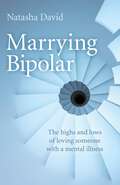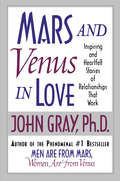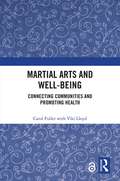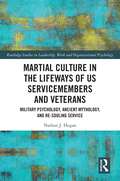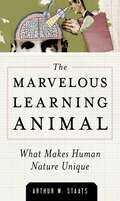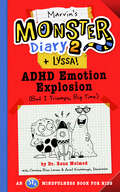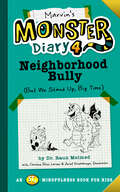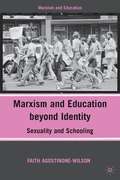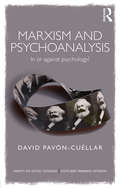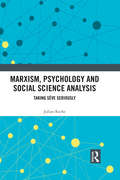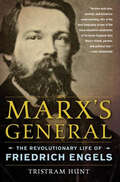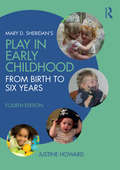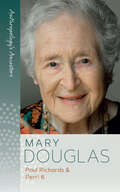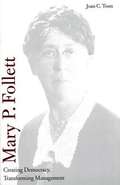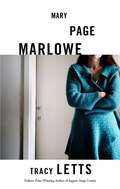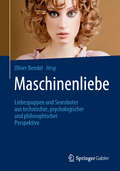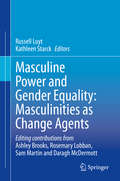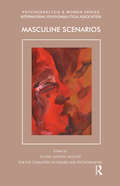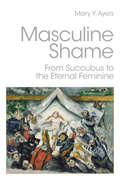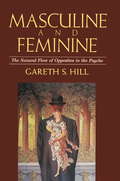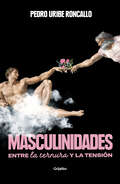- Table View
- List View
Marrying Bipolar: The Highs And Lows Of Loving Someone With A Mental Illness
by Natasha DavidOn the last day of winter in 2005, John committed suicide in his car on a lonely side road of the Blue Mountains to the west of Sydney, Australia. He was six months shy of his thirtieth birthday. It was the culmination of nine years of struggle for John and his wife, as he battled undiagnosed mental illness, a gambling addiction, and an earlier suicide attempt. Despite his wife's love and attempts to understand his condition, in the end nothing could save John from his demons. Tragically, John&’s story could be anybody's story. In Australia, around 2,100 people commit suicide every year; up to 12% of people affected by mental illness take their own lives (compared with an average of 1.7% for the whole population), and suicide is the main cause of premature death among people with mental illness. But the effects of suicide are even more far-reaching. Its impact on those left behind is frequently devastating and lifelong. The author knows this first-hand. Marrying Bipolar is the account of a wife&’s struggle to understand the events in her husband&’s life that would eventually lead to their marriage breakdown and his untimely death. Natasha&’s experience watching her husband struggle with the complexity of mental illness, has led her understand the deadly role denial has to play, for both sufferer and partners. In the process, the author addresses her own search of ways to address denial of the darkness that resides in all of us, and the compassion needed to heal and rebuild lives after enduring.
Mars and Venus in Love
by John GrayStraight from the heart -- real-life couples share inspiring, edifying stories of Mars and Venus in love.Millions of readers have learned about relationships from John Gray's previous bestsellers, such as Men Are from Mars, Women Are from Venus, Mars and Venus on a Date; and Mars and Venus in the Bedroom. Inspired by this enthusiasm, Gray asked a number of readers to share their own stories of how they've put his principles to work in their relationships. The result is this amazing collection of first-person accounts-along with Gray's own enlightening commentary-that will have you laughing, crying, and nodding in recognition.Gray's contributors answer such questions as: What problems have you had in your relationship, and how have you overcome them? What special things do you and your partner do for each other? How do you best communicate with each other? How do you practice what you've learned? How does your love feel different now from how it felt before?Their answers illustrate more eloquently than any textbook how to use Gray's advice and counsel to create your own fulfilling, healthy, and loving relationships.
Mars and Venus in Love: Inspiring and Heartfelt Stories of Relationships That Work
by John GrayStraight from the heart -- real-life couples share inspiring, edifying stories of Mars and Venus in love. Millions of readers have learned about relationships from John Gray's previous bestsellers, such as Men Are from Mars, Women Are from Venus, Mars and Venus on a Date; and Mars and Venus in the Bedroom. Inspired by this enthusiasm, Gray asked a number of readers to share their own stories of how they've put his principles to work in their relationships. The result is this amazing collection of first-person accounts-along with Gray's own enlightening commentary-that will have you laughing, crying, and nodding in recognition. Gray's contributors answer such questions as: What problems have you had in your relationship, and how have you overcome them? What special things do you and your partner do for each other? How do you best communicate with each other? How do you practice what you've learned? How does your love feel different now from how it felt before? Their answers illustrate more eloquently than any textbook how to use Gray's advice and counsel to create your own fulfilling, healthy, and loving relationships.
Marte y Venus en el dormitorio: Amor y pasión duraderos en la vida de la pareja (Vintage Espanol Ser.)
by John Gray¿Es la extinción del deseo sexual una ley inexorable de la vida en pareja? Si bien la experiencia de muchos matrimonios parece corroborarlo, no hay nada que lo determine. Partiendo de la idea, universalmente aceptada, de que la pasión sexual es la base de la convivencia en pareja, John Gray identifica uno de sus enemigos más insidiosos: el mutuo desconocimiento de la actitud psicológica e incluso de la reacción fisiológica que tienen hombres y mujeres. Este libro no es una guía sexual convencional, por lo que no se centra en la mecánica del sexo, sino en los principios y métodos para mejorar la comunicación entre los miembros de la pareja, y «mantener viva la magia del enamoramiento».
Marte y Venus salen juntos (Autoayuda Y Superación Ser.)
by John GrayUna lectura indispensable para todos aquellos que tienen una relación y no quieren estropearla, pero también para quienes se sienten atraídos por otra persona y no saben qué pasos dar. Marte y Venus salen juntos es una de las más innovadoras y sugerentes obras en el campo de las relaciones de pareja. Comienza describiendo las cinco fases por las que necesariamente atraviesa toda relación: atracción, incertidumbre, exclusividad, intimidad y compromiso); posteriormente analiza las distintas actitudes ante el proceso y termina con una invitación: la de frecuentar los ciento un lugares donde encontrar el alma gemela.
Martial Arts and Well-being: Connecting communities and promoting health
by Carol Fuller Viki LloydMartial Arts and Well-Being explores how martial arts as a source of learning can contribute in important ways to health and well-being, as well as provide other broader social benefits. Using psychological and sociological theory related to behaviour, ritual, perception and reality construction, the book seeks to illustrate, with empirical data, how individuals make sense of and perceive the value of martial arts in their lives. This book draws on data from over 500 people, across all age ranges, and powerfully demonstrates that participating in martial arts can have a profound influence on the construction of behaviour patterns that are directly linked to lifestyle and health. Making individual connections regarding the benefits of practice, improvements to health and well-being – regardless of whether these improvements are ‘true’ in a medical sense – this book offers an important and original window into the importance of beliefs to health and well-being as well as the value of thinking about education as a process of life-long learning. This book will be of great interest to a range of audiences, including researchers, academics and postgraduate students interested in sports and exercise psychology, martial art studies and health and well-being. It should also be of interest to sociologists, social workers and martial arts practitioners.
Martial Culture in the Lifeways of US Servicemembers and Veterans: Military Psychology, Ancient Mythology, and Re-Souling Service (Routledge Studies in Leadership, Work and Organizational Psychology)
by Nathan J. HoganThis book develops a new concept—“martial culture”—with which to problematize and reframe thinking surrounding the lifeways of US servicemembers, by exploring the values, beliefs, norms, and rituals they are exposed to and practice during military service. By reuniting the two concepts of servicemember and veteran into one overarching cultural model, the author shows how the concept of martial culture can be used to acknowledge the unbroken, holistic, multidimensional life cycle of an individual. Adopting a comparative mythological approach and drawing upon Roman, Navajo, Hindu, Norse, and Japanese myths that speak to the lived experiences of servicemembers, veterans, and their families, it weaves together ancient voices and contemporary servicemember experiential existences to offer new insight into the psychological experience of servicemembers. It will be of strong interest to psychologists who seek to develop their treatment of veterans by understanding the unique lifeway of service without judgement and offering a balanced, integrated spiritual connection, while pushing back against both inaccurate assumptions of martial lifeways and the influences of industrialized secular approaches to service. It will also appeal to those within the fields of military sociology and psychology.
Marvelous Learning Animal: What Makes Human Behavior Unique
by Arthur W. StaatsWhat makes us human? In recent decades, researchers have focused on innate tendencies and inherited traits as explanations for human behavior, especially in light of groundbreaking human genome research. The author thinks this trend is misleading. As he shows in great detail in this engaging, thought-provoking, and highly informative book, what makes our species unique is our marvelous ability to learn, which is an ability that no other primate possesses. In his exploration of human progress, the author reveals that the immensity of human learning has not been fully understood or examined. Evolution has endowed us with extremely versatile bodies and a brain comprised of one hundred billion neurons, which makes us especially suited for a wide range of sophisticated learning. Already in childhood, human beings begin learning complex repertoires-language, sports, value systems, music, science, rules of behavior, and many other aspects of culture. These repertoires build on one another in special ways, and our brains develop in response to the learning experiences we receive from those around us and from what we read and hear and see. When humans gather in society, the cumulative effect of building learning upon learning is enormous. The author presents a new way of understanding humanness-in the behavioral nature of the human body, in the unique human way of learning, in child development, in personality, and in abnormal behavior. With all this, and his years of basic and applied research, he develops a new theory of human evolution and a new vision of the human being. This book offers up a unified concept that not only provides new ways of understanding human behavior and solving human problems but also lays the foundations for opening new areas of science.
Marvin's Monster Diary 2: ADHD Emotion Explosion (But I Triumph, Big Time), An ST4 Mindfulness Book for Kids (Monster Diaries #4)
by Raun Melmed Caroline Bliss LarsenMeet Marvin, a lovable monster with a twelve-stringed baby fang guitar, a rambunctious case of ADHD, emotions that sometimes overwhelm him (and others), and a diary to record it all. While Marvin got it together in Marvin's Monster Diary: ADHD Attacks, his lab partner Lyssa's emotional roller coaster is a bit out of control. Can he help her—and win the Science Scare-Fair—before she explodes?In the same humorous spirit of Diary of a Wimpy Kid comes Marvin's Monster Diary: ADHD Emotion Explosion Using the "monstercam" and "ST4" techniques developed by Dr. Raun Melmed of the Melmed Center in Arizona, Marvin's Monster Diary: ADHD Emotion Explosion teaches kids how to be mindful, observe their surroundings, and take time to think about their actions. Marvin's hilarious doodles and diary entries chronicle his delightful adventures, misadventures, and eventual triumph in a funny, relatable way. It's the series on ADHD that kids will actually want to read! Marvin's Monster Diary: ADHD Emotion Explosion also includes a resource section to help parents and teachers implement Dr. Melmed’s methods, plus ST4 badge reminders that kids can remove, color, and place around the house.
Marvin's Monster Diary 4: (But We Stand Up, Big Time!) (Monster Diaries)
by Raun MelmedDr. Raun Melmed teaches children how mindfulness (via his ST4 Method) can help them stand up to bullies in this new addition to the Monster Diaries series. Included on the Society of Developmental and Behavioral Pediatrics's recommended resource list
Marxism and Education beyond Identity: Sexuality and Schooling
by Faith Agostinone-WilsonThis book seeks to revive dialectical materialist interpretations of sexuality, relevant to K-12 settings and society. Issues addressed include: sexuality and the curriculum, theories of the family, critiques of postmodernism, socialist feminism, and activist tactics/strategies for organizing in K-12 settings.
Marxism and Psychoanalysis: In or Against Psychology? (Concepts for Critical Psychology)
by David Pavon-CuellarThe methods developed by Freud and Marx have enabled a range of scholars to critically reflect upon the ideological underpinnings of modern and now postmodern or hypermodern western societies. In this intriguing book, the discipline of psychology itself is screened through the twin dynamics of Marxism and psychoanalysis. David Pavón-Cuéllar asks to what extent the terms, concerns and goals of psychology reflect, in fact, the dominant bourgeois ideology that has allowed it to flourish. The book charts a gradual psychologization within society and culture dating from the nineteenth century, and examines how the tacit ideals within mainstream psychology – creating good citizens or productive workers – sit uneasily against Marx and Freud’s ambitions of revealing fault-lines and contradictions within individualist and consumer-oriented structures. The positivist aspiration of psychology to become a natural science has been the source of extensive debate, critical voices asserting the social and cultural contexts through which the human mind and behaviour should be understood. This challenging new book provides another voice that, in addressing two of the most influential intellectual traditions of the past 150 years, widens the debate still further to examine the foundations of psychology.
Marxism and the Individual
by Cem EroğulThis book attempts to develop a Marxist theory of the human individual. It contends that the standard description of the human as a bio-psycho-social being is fundamentally deficient as it doesn’t specify which of these attributes is the determining one. As long as this is not done, the real nature of humanity cannot be uncovered.
Marxism, Psychology and Social Science Analysis: Taking Sève Seriously
by Julian RocheMarxism, Psychology and Social Science Analysis applies Marxist theory, psychology, and the work of Lucien Sève to specific research in the social sciences. It shows in practical terms what guidance can be offered for social scientific researchers wanting to incorporate Sève’s view of personality into their work. Providing case studies drawn from different social sciences that give the book significant breadth of scope, Roche reviews the impact of "Taking Sève Seriously" across the study of international relations theory, economics, law, and moral philosophy. The book begins by placing the work of Lucien Sève in context and considers the development of psychology in relation to Marxism, before going on to summarise the work of Sève in relation to the psychology of personality. It considers the opportunities for refreshed research in social relations based on developments by Sève, before examining Marxist biography and the implications of Sève’s views. The book also includes chapters on the social discount rate, on constructivism in international relations, on the concept of promising in moral philosophy and the Marxist conception of individual responsibility. It addresses not only how research should be carried out differently, but whether utilising the theoretical framework of other writers, even non-Marxists, can deliver a similar outcome. With its use of five distinct case studies to analyse the work of Lucien Sève, this unique book will be of great interest to academics, researchers and postgraduate students in the fields of psychology, philosophy and social sciences.
Marx’s General: The Revolutionary Life of Friedrich Engels
by Tristram HuntFriedrich Engels is one of the most intriguing and contradictory figures of the nineteenth century. Born to a prosperous mercantile family, he spent his life enjoying the comfortable existence of a Victorian gentleman; yet he was at the same time the co-author of The Communist Manifesto, a ruthless political tactician, and the man who sacrificed his best years so that Karl Marx could have the freedom to write. Although his contributions are frequently overlooked, Engels's grasp of global capital provided an indispensable foundation for communist doctrine, and his account of the Industrial Revolution, The Condition of the Working Class in England, remains one of the most haunting and brutal indictments of capitalism's human cost. <p><p>Drawing on a wealth of letters and archives, acclaimed historian Tristram Hunt plumbs Engels's intellectual legacy and shows us how one of the great bon viveurs of Victorian Britain reconciled his exuberant personal life with his radical political philosophy. This epic story of devoted friendship, class compromise, ideological struggle, and family betrayal at last brings Engels out from the shadow of his famous friend and collaborator.
Mary D. Sheridan's Play in Early Childhood: From Birth to Six Years
by Justine HowardMary D. Sheridan’s Play in Early Childhood is a classic introductory text to play and development – key topics for all those who work with young children. Drawing on the most up-to-date evidence, it explains how children’s play develops and how they develop as they play. With over 100 illustrations and observations of play from birth to six years, this new edition presents classical and contemporary literature, making clear links between play and all areas of children’s development. It includes updated activities to consolidate thinking and suggestions for further reading throughout. This text considers: the development, value and characteristics of play issues relating to culture, adversity, gender, attachment and brain development play from recreational, therapeutic and educational perspectives the role of parents/caregivers and professionals in supporting play how to develop observation and reflection skills for use in your own practice Suitable both for those new to the area and for more experienced workers wanting a quick reference guide, this easy-to-follow book meets the needs of students and professionals from a wide range of health, education and social care backgrounds, including early years professionals, playworkers, children’s nurses, play therapists and social workers.
Mary Douglas (Anthropology's Ancestors #4)
by Perri 6 Paul RichardsThis handy, concise book covers the life of Mary Douglas, one of the most important anthropologists of the second half of the 20th century. Her work focused on how human groups classify one another, and how they resolve the anomalies that then arise. Classification, she argued, emerges from practices of social life, and is a factor in all deep and intractable human disputes. This biography offers an introduction to how her distinctive approach developed across a long and productive career and how it applies to current pressing issues of social conflict and planetary survival. From the Preface: The influence of Professor Dame Mary Douglas (1921-2007) upon each of the social sciences and many of the disciplines in the humanities is vast. The list of her works is also vast, and this presents a problem of choice for the many readers who want to get a general idea of what she wrote and its significance, but who are somewhat baffled about where to begin. Our book offers a short overview and suggests why her key writings remain significant today.
Mary P. Follett: Creating Democracy, Transforming Management
by Joan C. TonnMary P. Follett (1868-1933) brought new dimensions to the theory and practice of management and was one of America's preeminent thinkers about democracy and social organization. The ideas Follett developed in the early twentieth century continue even today to challenge thinking about business and civic concerns. This book, the first biography of Follett, illuminates the life of this intriguing woman and reveals how she devised her farsighted theories about the organization of human relations. --BOOK JACKET. Title Summary field provided by Blackwell North America, Inc. All Rights Reserved
Mary Page Marlowe (TCG Edition)
by Tracy LettsBest known for his portrayals of large-scale family drama, Tracy Letts’ new play narrows in focus, zooming in on the life of just one woman, though her story is no less complex. This intimate snapshot of a simple life provides an enlightening examination of a complicated human mind.
Maschinenliebe: Liebespuppen und Sexroboter aus technischer, psychologischer und philosophischer Perspektive
by Oliver BendelSexroboter sind ein Thema, das die Medien mit Vorliebe behandeln und die Gesellschaft spaltet. Es gibt einige Modelle wie Emma oder Harmony. Viel verbreiteter sind allerdings einfache Liebespuppen mit überzeugender Haut und auswechselbaren Körperöffnungen. Sie finden sich in zahlreichen Bordellen und können problemlos bei Amazon und Co. bestellt werden. Zwischen Liebespuppen und Sexrobotern sind die Grenzen fließend. Sobald Liebespuppen sprechen können oder Sensoren und Aktoren haben, werden sie zu Sexrobotern. Einzelne Varianten weisen mimische Fähigkeiten auf und können den Kopf bewegen. Das Buch erklärt Grundbegriffe, geht auf technische Details ein und diskutiert psychologische, soziologische und philosophische Erkenntnisse und Herausforderungen. Es beleuchtet die Praxis der Sexarbeit und liefert Stellungnahmen von Herstellern und Benutzern.
Masculine Power and Gender Equality: Masculinities As Change Agents
by Russell Luyt Kathleen StarckThis book explores how political institutions can challenge dominant and normative masculinities, guiding thinking instead toward a transformation of gendered power structures and general equality. Representing a range of relevant areas, the expert chapter authors provide various methodological and theoretical approaches applied to shifting gender meanings in cultural, national, and social contexts. Authors also represent a variety of cultures, contributing to the multi-perspective debate about how best to achieve gender equality in the real world.Among the topics discussed:Reimagining masculinities, their everyday practice and practical interventions Towards a feminist theory of male rapePolitical implications of challenging men’s everyday practices through domestic violence primary prevention workMen as allies: a case study of White Ribbon AustraliaMasculine Power and Gender Equality: Masculinities as Change Agents provides valuable insight into strategies for re-imagining male-dominated power structures and promoting gender equality.
Masculine Scenarios (Psychoanalysis and Women Series)
by Mariam Alizade'Human identity, sexual identity, primary and secondary identification, object choice, narcissism - all of these lie on a continuum with homosexuality, transsexualism, transvestism, heterosexuality and asexuality. Concepts on sexuality and gender are outlined anew in an interplay of theoretical and clinical networks, with the aim of increasing the efficiency of analytic praxis freed from prejudice and monolithic convention.'- the author, from the Foreword Masculine Scenarios is the third volume in a unique series edited by the author for the Committee on Women and Psychoanalysis of the International Psychoanalytical Association. Providing a forum for exploration and discussion of diverse issues relating to gender constructs, sexuality, and sexual identity, the series brings together an internationally renowned group of contributors trained in the psychoanalytic tradition. Masculine Scenarios concentrates on issues regarding the psychic world of men and male sexuality. The construction of gender identity, the battle of the sexes, transsexualism, homosexuality and masculinity are some of the topics discussed in this inspiring book.
Masculine Shame: From Succubus to the Eternal Feminine (Routledge Studies In Religion Ser.)
by Mary Y. AyersHow does the image of the succubus relate to psychoanalytic thought? Masculine Shame: From Succubus to the Eternal Feminine explores the idea that the image of the succubus, a demonic female creature said to emasculate men and murder mothers and infants, has been created out of the masculine projection of shame and looks at how the transformation of this image can be traced through Western history, mythology, and Judeo-Christian literature. Divided into three parts areas of discussion include: the birth of civilization and the evolution of the succubus the image of the succubus in the writings of Freud and Jung the succubus as child killing mother to the restoration of the eternal feminine. Through a process of detailed cultural and social analysis, the author places the image of the succubus at the very heart of psychoanalytic thought, highlighting its presence in both Freud’s Medusa and Jung’s visions of Salome. As such, this book will be of great interest to all those in the fields of analytical psychotherapy and psychoanalysis.
Masculine and Feminine: The Natural Flow of Opposites in the Psyche
by Gareth S. HillA Jungian analyst provides a new model for understanding the masculine and feminine principles that exist in everyone, providing insight into the events of daily life and the themes of entire lifetimes.
Masculinidades
by Pedro UribeUn lúcido ensayo sobre las masculinidades, el rol de los hombres en la sociedad compleja de hoy y las distintas visiones que existen sobre la virilidad, el patriarcado y la deconstrucción de lo masculino. En tiempos en que el feminismo parece tomarse el debate, el sicólogo Pedro Uribe escribe sobre las luces y las sombras que están atravesando las relaciones entre los hombres y las mujeres en una sociedad compleja y turbulenta como la actual. Y se pregunta: ¿qué está pasando con los hombres?, ¿por qué algunos son violentos y otros, criados del mismo modo, no ejercen violencia de género?, ¿por qué los hombres actúan así? ¿qué están sintiendo? Desvelando el manto de misterio que cubre la masculinidad, esta es una invitación a pensar y ampliar las miradas sobre el rol de los varones en la sociedad de hoy.
